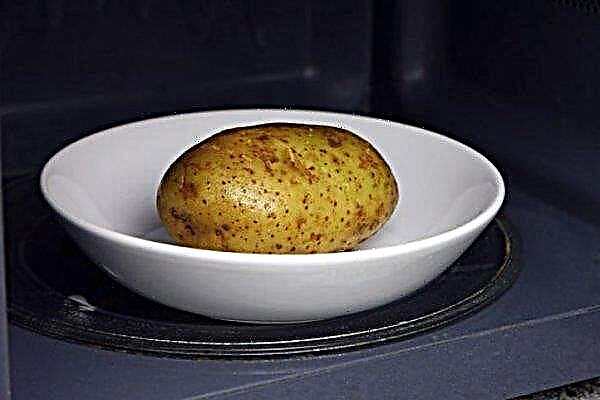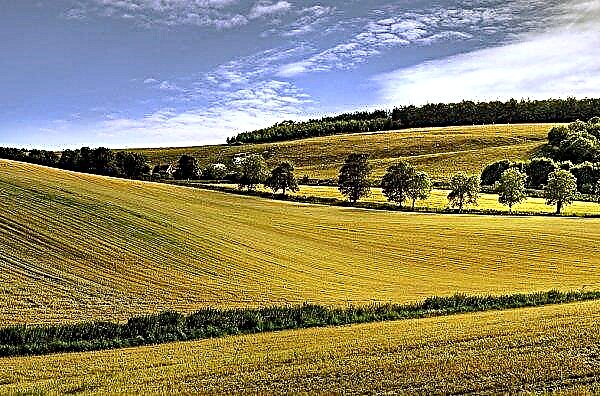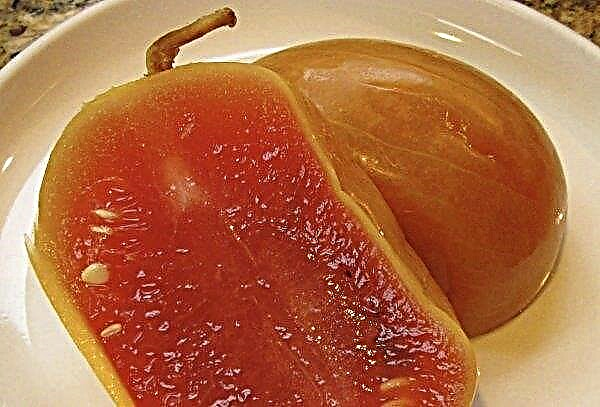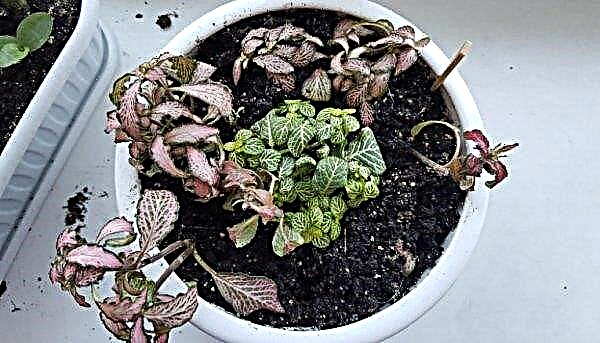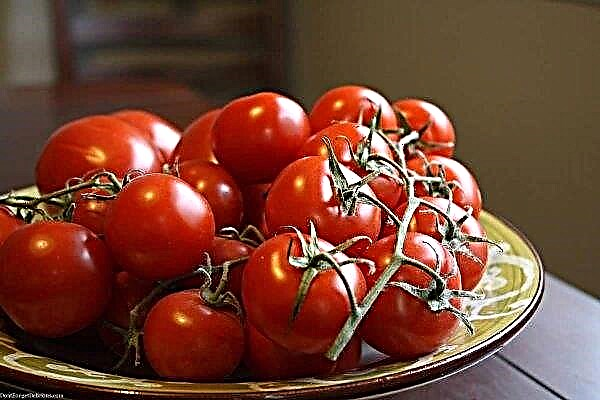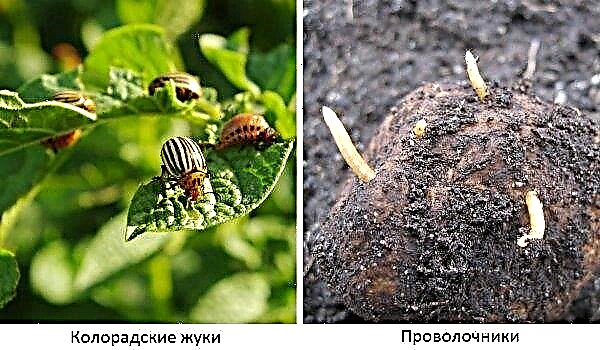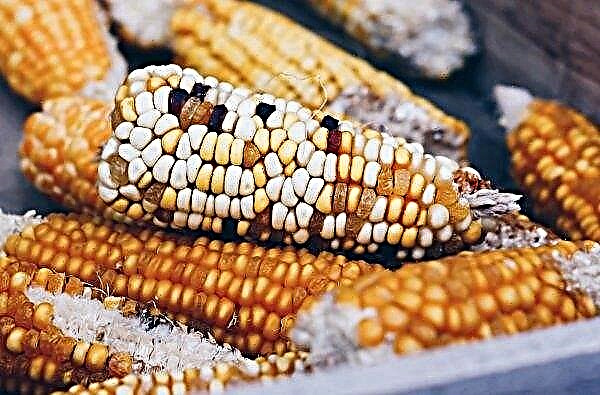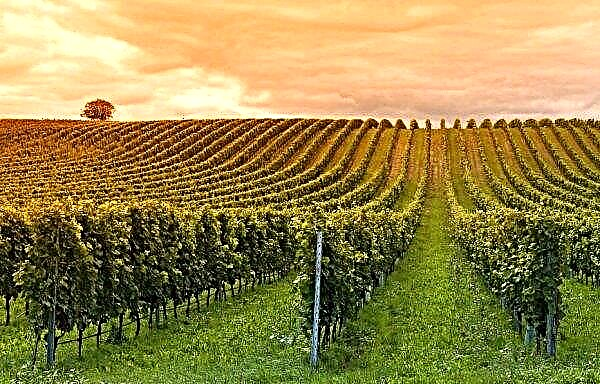Harvesting cucumbers for the winter seems like a chore. In fact, this is not so at all - pickling the cucumbers so that they remain crunchy is real creativity. A lot of different recipes only push for the creation of culinary masterpieces.
Selection and preparation of cucumbers
The choice of cucumbers for harvesting should be approached responsibly, since an unsuccessful batch of raw materials will nullify all efforts and spoil the mood for a long time.
The following cucumbers are suitable for home preservation:
- small size - they are the most delicious, sweet and will fit snugly in jars;
- dense to the touch and not too dark;
- the light part of the fruit should not be yellowish;
- the taste of the fruit should not contain bitterness - when buying a large batch, this should be checked on 2-3 copies, slightly biting the dark part;
- thick-skinned cucumbers are the most crispy;
- without internal voids;
- rough with black spikes on pimples.
Did you know? The structure of the cucumber fruit is characteristic of the structure of the fruits of the pumpkin family and is called - pumpkin. The same word in the botanical descriptions refers to the fruits of pumpkin, watermelon, zucchini and squash.
Crispy pickles for winter in jars
Winter preparations of cucumbers are made in 1-liter, one and a half liter, in 2-liter and 3-liter jars. There are a great many recipes, but the most used are discussed below. The ingredients are given in proportion to a 3-liter jar, if necessary, obtain a proportion of 1 liter, you need to divide the number of all ingredients by 3.
A simple cold recipe

30 minutes
leaves of cherry, blackcurrant and oak
5-6 pcs.
Nutritional value per 100 g:
- Wash the food, cut the tails of the cucumbers and put everything mixed up in a bottle.
- Dissolve the salt in filtered cold water and pour the brine into a container with future preservation.
- Add two sheets of horseradish on top, which perform three functions - increase the crisp quality of the product, improve its taste and prevent the formation of mold at the top of the jar.
- Put the bottle in a wide plate, put a nylon cover on its neck (do not close!).
- After three days, add the brine into the plate to the top of the can, and tightly close the nylon cover.
- Send preservation to a cool place and use during the winter.
Video recipe
A simple cold recipe
Important! The amount of salt in this recipe is slightly higher than the normal norm for salting, so before use it may be necessary to soak the product a little in cool water.
Hot without sterilization

40 minutes
cherry and blackcurrant leaves
up to 6 pcs.
Nutritional value per 100 g:
- Soak the cucumbers for an hour, wash, dry on a napkin, remove flowers and ponytails.
- Wash all leaves and umbrellas.
- Peel the garlic cloves and cut them into small pieces or thin plates.
- Stack the fruit tightly in a jar. At the bottom, in the middle and on top, make a layer of leaves, dill, horseradish and garlic.
- When everything is already laid, optionally add hot pepper on top.
- Pour boiling water over the containers, cover with boiled lids and leave to cool.
- After an hour, drain the water into the pan, stir in salt, sugar and add spices. After this, the brine must be brought to a boil.
- After boiling add vinegar and boil again.
- Pour the brine into banks that you immediately need to roll up, turn over and wrap.
Video recipe
Hot without sterilization
No vinegar

30-40 minutes
cherry (or currant)
4-5 leaves
Nutritional value per 100 g:
- Soak and dry the fruits, put them in a sterilized bottle.
- After this, fill the container with boiling water to the top, cover and wrap with a towel for 20 minutes.
- During this time, prepare the brine - in the water you need to add salt, sugar and bring it to a boil.
- Drain the water from the cans, add citric acid there, and fill the cooked brine.
- Roll up the product with covers and send to cool under the covers.
Video recipe
No vinegar
With mustard

60 minutes
Nutritional value per 100 g:
- Soak the fruits for a couple of hours, wash them and remove the ponytails, put them in sterilized jars.
- Pour jars of boiling water and cover for 30 minutes.
- Drain the water, add salt, sugar, tomato paste, bay leaves, mustard seeds, peppercorns, and bring the liquid to a boil.
- Crumble the cloves of garlic into a bottle with cucumbers.
- Pour the brine into the containers almost to the top, then add the vinegar.
- Turn the bottles over, wrap them up and leave them in this position for a day.
Video recipe
With mustard
With tomato slices

30-40 minutes
allspice
5-6 peas
Nutritional value per 100 g:
- Wash, dry and cut the vegetables: cucumbers in circles of 0.5-1 cm, and tomatoes into quarters. Onions can be cut in half rings.
- Sterilize the jars and randomly fill them tightly with vegetables and dill.
- Prepare the marinade - dissolve the salt and sugar in water and bring the brine to a boil. After that, pour vinegar into boiling water.
- Add sunflower oil to each jar, then pour the marinade.
- Sterilized jars, sterilize for 10 minutes in a high pot of boiling water, which reaches up to 3/4 of their height.
- After sterilization in a container of vegetables, add the marinade to fill to the top.
- Roll up the bottles and wrap them upside down.
With citric acid

40-50 minutes
black pepper
up to 10 peas
Nutritional value per 100 g:
- Soak the cucumbers for 1-2 hours, wash them and trim the tails.
- Put greens and spices in carefully washed cans.
- Place the fruits in containers and pour boiling water for 20 minutes.
- Drain the cooled water, dissolve the salt and sugar in it. After this, boil the brine again.
- Pour the resulting marinade into bottles. Then add citric acid.
- Roll up the product and put it in a dark place for cooling.
Important! After seaming, you should carefully roll the cans on the table. This is done not only to check for possible leakage, but also to distribute the volume of citric acid.
Sweet Cucumber Recipe

40-50 minutes
black pepper
8-10 peas
allspice
6–8 peas
Nutritional value per 100 g:
- Rinse the fruits, dry and trim the tails.
- Stylize jars and lids, put cucumbers, dill, horseradish, garlic and spices in them.
- Pour boiling water over the containers and hold for 20 minutes.
- Drain the water from the bottles into the pan. While the water is brought to a boil, dissolve the salt and sugar in it. After boiling in the liquid, introduce citric acid.
- Pour the marinade into cans, roll up, turn over and wrap until cool.
Features of storing pickles in a jar
To store salty delicious cucumbers at home, you need a dark, cool place. Ideally, this is a basement or cellar, but, in the absence of these premises, you can equip a storage place on the balcony, reliably protecting pickles from the winter cold.
A home pantry is also suitable, but the temperature regime in it will not allow for a long time to store those types of pickles that needed to be filled with boiling water once and which are stored under a nylon cover.
Additional tips
Many housewives have their own secrets, the use of which allows you to get delicious and crispy cucumbers.
Here are some recommendations from conservation masters:
- the most delicious crisp cucumbers are obtained if they are preserved right after harvest;
- different sizes of material will cause uneven streaking and taste;
- do not use tap water - it can spoil even the best raw materials;
- well water or purchased purified water is best;
- in order to salt large cucumbers, they do not fit into containers, but are placed vertically;
- when soaking the fruits before salting, the water needs to be changed every half hour or an hour.
Preservation of cucumbers is not too complicated. It is enough to take into account all the nuances, comply with the requirements of the recipes, and very soon you can enjoy the delicious crispy fruits.Did you know? Calling a cucumber a vegetable is reckless - the fruits of this plant are vegetables only according to culinary recipes. But according to the botanical classification, it is a fruit that forms false berries.

